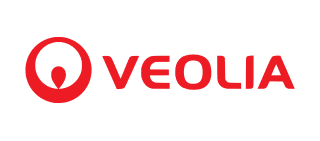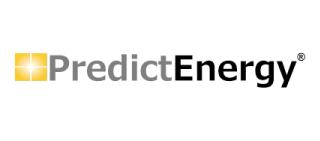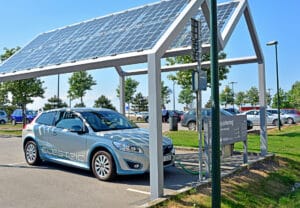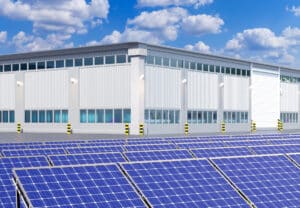
The last few years have brought home not just how much energy can cost us in financial terms but how significantly the climate has been affected by our methods of energy production.
To use energy in the most efficient way possible, businesses must monitor and manage it carefully via energy management software solutions.
Switching over to renewable sources is a big part of energy management—last year alone, businesses around the globe spent over $750 billion on efforts to decarbonize.
But that’s not the only reason to optimize efficiency. Minimizing energy waste can increase profits by as much as 10% per year.
Going green is an important step, but no matter where you’re sourcing your energy, there are a lot of ways for businesses to improve their energy efficiency by managing it more effectively.
To achieve this, you have to understand where the energy is going, how it’s being used, and what you can do to optimize it. Managing this across a large-scale enterprise can seem daunting, but energy management software can provide adaptable solutions.
What is energy management?
Energy asset management (EAM) is the process of monitoring and controlling energy assets to minimize consumption while maximizing operational efficiency. It also reduces your carbon output, making energy management an important part of efforts to conserve the environment and fight climate change.
Many businesses are preparing to reach sustainable energy goals, like the Net Zero standard. Effective energy management practices are essential for making progress toward these goals.
There’s a lot of room for improvement—businesses in the UK are on track to lose as much as £30 billion on wasted energy this year. In the US, inefficiency eats up nearly a third of the energy used to power the average building.
By implementing strong energy management processes supported with software and other resources, businesses can lower their costs and reduce their carbon footprint at the same time.
How does energy management work?
Energy management processes will vary depending on the solutions employed but should include the following steps:
Use sensors to collect accurate data in real-time
Smart sensors are integral to connect to energy assets at remote sites and retrieve key information. In addition to monitoring, they can streamline management by providing you with remote access to controls, security, and other functions.
Analyze data to pinpoint issues within your energy operations
Usage data will show you where optimization is possible, how to reduce fossil fuel reliance in certain areas, and how to maximize the use of alternative energy sources.
This opens the door for targeted, effective changes such as incorporating IoT technology, site and equipment performance comparisons, benchmarking performance levels, or utilizing smart plug load controllers.
Track key performance metrics after upgrading systems
Once changes have been made, you need to identify KPIs and track them to ensure they are delivering the desired improvements to efficiency.
Repeat the above steps.
This process must be repeated, analyzed, and evaluated to prevent inefficiencies from creeping back in.
Top 8 energy management software solutions
Energy management software can be deployed across various industries, including energy plants, fleets, government facilities, service provider installations, information and communication technology sites, and factories.
Here are eight of the top energy management software solutions:

This asset management solution focuses on utility companies, manufacturers, and other industries with complex infrastructure and energy needs.
Mainpac is designed to detect maintenance issues early and improve the costs and availability of critical energy assets.
Pros: The easy-to-navigate interface can be controlled via a mobile app.
Cons: Sometimes, the software unexpectedly logs you out, causing you to lose progress.
Pricing: By inquiry.
Reviewer Says: “It’s very easy to access through any device, be it Android or iPhone.”

A leading innovator in remote energy monitoring and management, Galooli provides a comprehensive, tech-agnostic remote energy asset management platform for ICT and other industrial facilities.
By enabling real-time monitoring of energy assets and their KPIs, Galooli generates actionable insights that can significantly improve energy efficiency while minimizing operational costs and carbon emissions.
Galooli offers visibility over various assets, from generators and batteries to door alarms and aviation lights. With this improved visibility, incident response times are reduced. Predictive maintenance is enabled with Galooli, which reduces operational costs while speeding up remediation and update time.
Pros: Can easily be deployed on the cloud or integrated with existing hardware. Provides detailed visual dashboards and customized reporting, among other helpful features.
Pricing: By inquiry.
Reviewer Says: “The software is user-friendly and is easy to learn and use, the fuel module is also very impressive and accurate.”
Another reviewer says: “Smart Site Management – The best among the rest I have ever used. Galooli’s smart site management provides users with efficient and smart remote management solutions of their connected assets.”

Designed to support renewable energy sources, PowerHub provides tools for managing the logistics and data processes associated with renewable energy installations.
With PowerHub, operators can calculate demand and make usage projections based on accurate consumption data.
Pros: Centralizes all project data onto a single platform.
Cons: Scope is limited to renewable energy projects.
Pricing: By inquiry.

Veolia is a massive multinational corporation based in France that provides a diverse range of solutions for companies trying to operate sustainably to fight climate change.
Their EAM solution focuses on inventory management and early detection of maintenance issues.
Pros: Veolia can provide customized solutions for large organizations.
Cons: EAM software isn’t Veolia’s focus. It’s just one of many solutions they offer.
Pricing: By inquiry.

Another solution built specifically for renewable energy sources, Power Factors Drive, allows users to monitor and remotely manage their assets through a web or mobile interface.
By tracking equipment performance and energy production levels, this solution can help eliminate inefficiencies.
Pros: Convenient, streamlined, cloud-based interface.
Cons: No support for non-renewable energy assets.
Pricing: By inquiry.
Reviewer Says: “Useful tool to quickly glance at my portfolio-wide energy production on-the-go and quickly identify down equipment and likely causes so I can take action in the field.”

Green IT by Radian Generation is a cloud-based EAM that emphasizes compliance and reporting.
Their live tracking features can provide a view into the performance of remote energy assets and analytics to help operators figure out effective improvement actions.
Pros: Built-in project management, contract compliance, and ticket tracking features.
Cons: Lack of remote control capabilities limits your ability to mitigate issues from off-site.
Pricing: By inquiry.

This solution is cloud-based and carries a lot of features of particular use to utilities.
Watchwire monitors the energy supply while keeping a close eye on risk factors for outages and malfunctions.
Periodic reports are fed to a centralized visual platform that makes tracking and measuring your sustainability footprint and energy performance easy.
Pros: Creates visually compelling reports in Excel format.
Cons: Aggregating data from multiple sites can be slow.
Pricing: By inquiry.
Reviewer Says: “Setup took a while to get running smoothly, and there were occasional issues that needed to be ironed out throughout the use of the software. But any issues were fixed quickly.”

This energy analytics platform provides in-depth information about your energy usage and how much it’s costing you.
By integrating live data from your energy assets with your production metrics and other factors, PredictEnergy can help organizations meet their efficiency goals and stay within established thresholds.
Pros: Provides detailed breakdowns of energy use, including timing, location, and KPI tracking.
Cons: Special hardware is required.
Pricing: By inquiry.
Why is energy management software beneficial?
For businesses with multiple worksites, equipment installations, and production environments, manual energy management is inefficient, if not impossible. Software solutions can simplify and centralize energy asset management, and here are just a few of the direct benefits they provide:
- The software allows you to identify and remedy potential issues as soon as they crop up—even remotely.
- You’ll waste less of the energy you’re purchasing, keeping your profit margins higher.
- Compliance tools can help you abide by the new energy laws related to sustainability and decarbonization.
- Whether your energy sources are standard or renewable, remote asset management is the most immediate and affordable way to optimize usage and lower your costs.
How to effectively and easily manage your energy
These days, it’s essential for businesses to make careful energy management a priority, and versatile EAM platforms like Galooli can resolve your energy management issues with quick and long-lasting solutions.
Galooli provides organizations with overarching visibility of their energy assets, including the ones in remote locations that can’t be accessed on short notice.
When problems are detected, you can take immediate corrective action no matter where you are.
With a view into historical performance data and real-time reporting, Galooli will help to understand how to maximize each asset’s usage, boosting efficiency while preventing downtime and lowering operational costs.
Connect with Galooli to get started transforming your data into greater energy efficiency and actual savings.
Connect With Us
operational cost savings & efficiency?



























